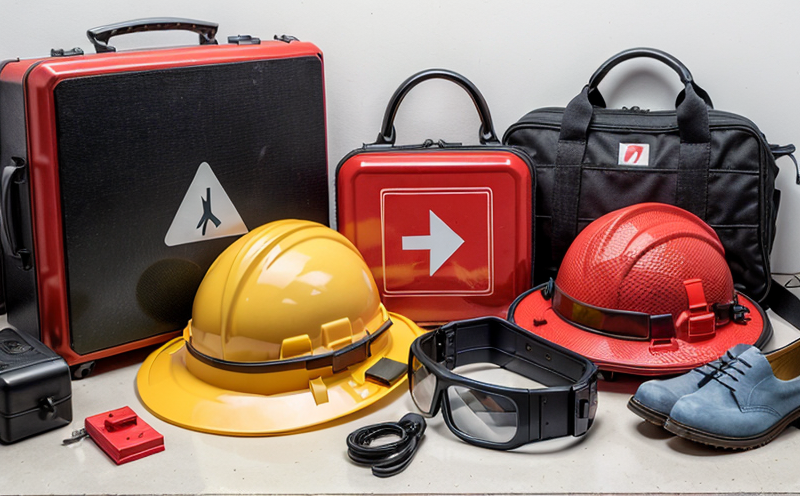EN 3 Portable Fire Extinguishers Performance Evaluation
The EN 3 standard is a pivotal requirement for portable fire extinguishers used in Europe. This European Standard specifies the performance requirements and testing methods necessary to ensure that these extinguishers are effective in combating fires of Class A, B, or C. Compliance with this standard is crucial for manufacturers looking to enter EU markets or ensure their products meet safety regulations.
The test procedure outlined in EN 3 involves several critical stages aimed at evaluating the performance and reliability of portable fire extinguishers under controlled conditions. This includes the discharge test which assesses how effectively the extinguisher can release its contents, ensuring it has sufficient pressure to operate properly. The flame height test evaluates the reduction in flame height achieved by the extinguishing agent after application.
Another key aspect is the spraying time measurement, which determines how long the extinguisher continues to spray its contents post-discharge. This parameter ensures that firefighters or personnel have ample time to complete their task safely and effectively. Additionally, the standard includes a test for residual pressure in the cylinder, ensuring that there's enough reserve capacity within the container.
The EN 3 protocol also mandates rigorous testing of the extinguisher's ease of use, including ergonomic design considerations. This ensures that the device is user-friendly even under stressful conditions such as emergencies. The standard places a strong emphasis on repeatability and reproducibility to maintain consistent results across multiple tests, thereby enhancing reliability.
Manufacturers must also adhere to strict documentation requirements stipulated by EN 3. This includes detailed records of all test procedures, observations made during testing, and final test outcomes. Such thorough documentation is essential for regulatory compliance and can serve as vital evidence in case of disputes or audits.
In summary, the EN 3 Portable Fire Extinguishers Performance Evaluation represents a comprehensive approach to ensuring the safety and effectiveness of portable fire extinguishers used across Europe. By adhering to this standard, manufacturers not only meet legal requirements but also enhance their products' reputation and marketability in competitive environments.
Applied Standards
The EN 3 Portable Fire Extinguishers Performance Evaluation is underpinned by several internationally recognized standards that aim to ensure the safety and effectiveness of fire extinguishers. These include:
- EN 1869 - Standard for the Design, Manufacture and Performance Requirements of Portable Fire Extinguishers
- ISO/IEC Guide 25:2005 - General Requirements for the Competence of Testing Laboratories
- ASTM E1677 - Standard Test Method for Determining the Effective Operating Time of a Portable Fire Extinguisher
The adherence to these standards ensures that fire extinguishers undergo robust testing procedures, thereby enhancing their reliability and safety. Compliance with EN 3 is particularly important as it aligns with broader European Union regulations on product safety.
International Acceptance and Recognition
- European Union (EU): All portable fire extinguishers sold within the EU must comply with EN 3 to ensure they meet stringent safety standards.
- United Kingdom (UK): Following Brexit, UK regulations have largely aligned themselves with those of the EU. Therefore, UK manufacturers and importers still need compliance with EN 3 for market access.
- Australia/New Zealand: While not mandatorily required in these regions, compliance can enhance a product's reputation and facilitate easier export to other countries that do enforce this standard.
- United States (US): Although the US primarily follows NFPA codes for fire extinguishers, some manufacturers opt for EN 3 certification to meet international quality standards and broaden their global market reach.
The widespread acceptance of EN 3 ensures that portable fire extinguishers are consistently evaluated against the same rigorous criteria globally. This uniformity fosters trust among consumers and enhances interoperability in emergency situations across different regions.
Competitive Advantage and Market Impact
Compliance with the EN 3 Portable Fire Extinguishers Performance Evaluation offers several strategic advantages for manufacturers:
- Enhanced Product Safety: By adhering to this standard, manufacturers ensure their products meet the highest safety benchmarks, thereby protecting users from potential hazards.
- Regulatory Compliance: Meeting EN 3 requirements helps companies avoid penalties associated with non-compliance and ensures smooth market entry into EU markets.
- Broadened Market Reach: Certification under EN 3 can open up new sales opportunities in Europe and beyond, enhancing a company's global footprint.
- Increased Customer Confidence: A verified compliance seal from an independent third party like ours instills confidence among consumers about the quality and reliability of the product.
In a highly competitive market, such certifications can be decisive factors in winning contracts and gaining market share. They also facilitate smoother interactions with regulatory bodies and ensure that products maintain their integrity throughout their lifecycle.





